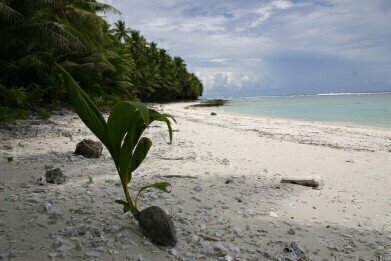Environmental laboratory
What's So Great about Ta'u's Solar Power?
Dec 07 2016
The tiny Pacific island of Ta’u made history last week by successfully transitioning to 100% solar power. The island, which forms part of American Samoa, is the first of its kind to be run completely from the power of the sun’s rays and should provide a shining example to other Pacific Islands looking to effect a similar change.
Leading by example
In the wake of the Paris COP21 climate change talks last December, 193 nations from around the globe agreed that the time for change is now when it comes to the issue of global warming. That’s especially true with regards to Pacific Islands, since these lower-lying archipelagos are often most at risk from rising sea levels.
As such, Ta’u have provided a superb example to the rest of the Pacific and to the rest of the world by achieving a complete transition to solar power. They had previously relied upon diesel for their energy needs, but in addition to being detrimental to the environment, it was also incredibly expensive and difficult to transport.
At a remove of more than 4,000 miles from the United States, Ta’u is an incredibly remote community. Prior to the switch to solar, it had relied upon a subsidy of $400,000 from neighbouring Tutuila which brought in over 100,000 gallons of diesel across the sea. In inclement weather, the ships transporting the diesel would be unable to dock, casting the island into disarray as life came to a standstill. What’s more, transporting such vast quantities of the black stuff was effectively running an environmental gauntlet with every voyage, since a spill or shipwreck could have had disastrous consequences on the ocean.
A better way
By moving away from diesel towards solar, Ta’u has taken advantage of its natural resources (i.e. abundant amounts of sunshine) to thrive in the renewable energy economy – and now it should be time for its fellow Pacific nations to follow suit.
“It is fantastic what they have done, and they should provide a working model for other Pacific island countries to study, as most get 6 to 8 sunshine hours a day, 1,000 watts per square metre – which is a resource that is otherwise wasted,” said Ashton Partridge, Associate Professor of Engineering at the University of Auckland.
“The cost of setup for solar is high and there has been a push-back against that. But it is ideal if governments absorb that cost, especially for these remote communities that would otherwise be totally reliant on non-renewable energy sources.”
Though it’s been a rocky road to achieving the transition, with climate difficulties, technical problems and delivery delays just some of the problems that the Ta’u authorities have had to face, the system is now in place. Cyclone season is just around the corner so the torrential conditions that it will bring should provide a test for the panels, but with the capacity to store enough energy for three days in the Tesla batteries, it should prove to be more than a match for a bit of wind and rain.
Digital Edition
AET 29.2 May 2025
May 2025
Water / Wastewater- From Effluent to Excellence: Microbiological assessment of a containerized modular water reuse pilot system- Without water everything comes to a haltAir Monitoring- Probe Sampli...
View all digital editions
Events
Jun 11 2025 Copenhagen, Denmark
Jun 17 2025 Guangzhou, China
Singapore International Water Week Spotlight 2025
Jun 23 2025 Singapore
Jun 24 2025 Santa Clara, CA, USA
Jun 25 2025 Sao Paulo, Brasil











.jpg)







